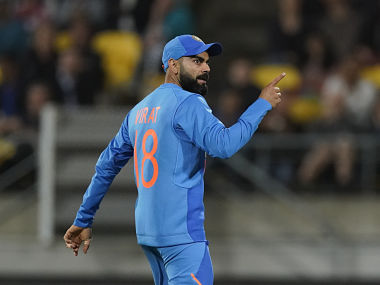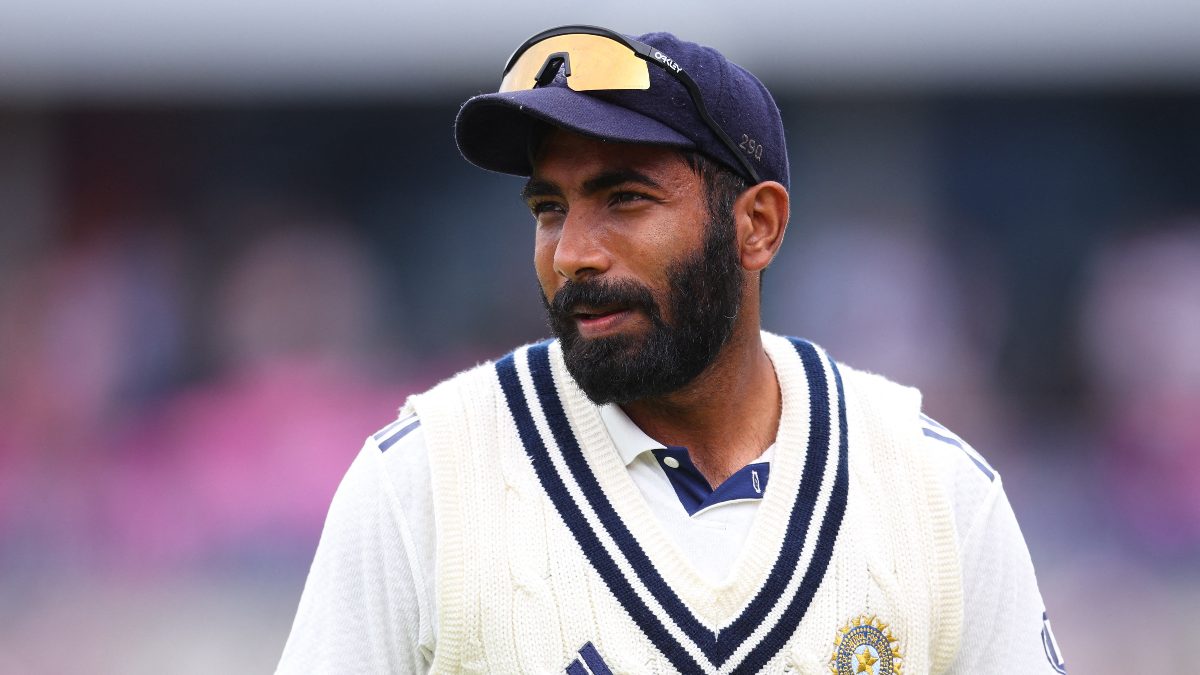There’s a lot more to analyse through this piece — unsurprisingly, after the sort of game we’ve witnessed at Wellington — but we have to start with a question directed towards New Zealand: What is going on with the Black Caps!? [caption id=“attachment_7985461” align=“alignleft” width=“380”] Virat Kohli reacts during the T20I against New Zealand in Wellington on Friday. Photosport via AP Photo[/caption] The Super Over specialists have bottled so much in just the space of 48 hours that cricket Twitter has been quick in branding New Zealand the new South Africa. Given the events that have transpired, it doesn’t even seem a harsh call. At Hamilton on Wednesday, the Kiwis needed two to win from four balls with Kane Williamson (95* off 47) on strike and Ross Taylor (17* off nine) at the other end, and six wickets in hand — but they couldn’t get over the line. At Wellington on Friday, they required 11 from 12 with Tim Seifert (54* off 34) and Taylor (23* off 16) in the middle, and seven wickets in hand — but they couldn’t get over the line. In both resulting Super Overs, they scored 13 or more — typically an above-par mark for one-over shootouts. Yet… This series could have been 2-2 going into the finale at Mount Maunganui. This series should have been 2-2 going into the finale at Mount Maunganui. This series goes into Mount Maunganui with the scoreline reading India 4, New Zealand 0. The more damning indictment from this latest Super Over defeat — New Zealand’s fourth in the last 202 days — is that it came against an Indian side now freed up to go experimenting, given the security of a series already in the bag. What that meant, going into the supposedly ‘crunch’ last two overs of this contest (it really shouldn’t have been crunch, by any standards), was that not only did they require less than a run-a-ball, but they were also facing up to Navdeep Saini and Shardul Thakur — and not Jasprit Bumrah and Mohammed Shami. The relatively unheralded duo was only on bowling duties for India at that stage because Virat Kohli’s side had utilised the comfort of their position to field their bench options. The gun trio of Rohit Sharma, Ravindra Jadeja and Mohammed Shami was given a rest, and Sanju Samson, Washington Sundar and Saini got a look-in; yes, Thakur had been part of the XI for the previous three games, but in a live rubber, with Shami also on the park, you’d doubt Thakur would be bowling the 20th over of a run-chase. The chances being handed out to the bench, arguably, were more crucial than the result; sure, a resounding series win anywhere would instill confidence, but the eye is also out on the bigger prize now less than 10 months away — and India want need a strong pool of 15+ players going into Australia for the T20 World Cup in October. Oddly enough, this game, which will now become one of those subconscious morale-boosters for the guys who were on the park, wasn’t quite going rather fondly for the auditioning pool of talent 18 overs into the Kiwi chase. Samson fell prey to the old six-and-out trap for the second time in as many outings in January. Sundar, after falling for a three-ball duck, had been taken apart from 24 runs from two overs, forcing his captain to call upon Shivam Dube to complete the spinner’s quota. Saini, despite showing well on the odometer, had leaked 22 from the last two overs he had bowled. Thakur’s three overs had gone for 29 — including a momentum-shifting 16 from the last over of the Powerplay after India had kept New Zealand down to 23/1 from the first five. Then, in the last 20-odd minutes of this eventually-pulsating clash, came the rebound of India’s fringe. Mark the 19th over of the innings, Saini’s final act for the day, as a possibly momentous occasion in the as-yet nascent career of the 27-year-old quick. Sure, Saini already had an impressive beginning behind his back — 11 wickets from seven innings, at less than 7.50-an-over and with a wicket every 13.5 deliveries — but it’s performances in clutch moments that come to define young talent, and in that regard, this, his first ‘big’ test, was something special: three of his six balls were short, but lifting enough to qualify as more troubling than hittable; the other three were corking yorkers, each landing accurately in the block hole, at speeds going up to 145 kmph. Only four runs came off that penultimate over, leaving New Zealand with seven still to get. Still — seven to get off the last over of a 20-20 game, with two well-set batsmen in the middle, and six more waiting in the dugout. This wasn’t game-on. It really shouldn’t have been. Four wickets fell in the 20th over of the innings. Two of them may have been run-outs (the first down to KL Rahul’s brilliant awareness behind the stumps), but Thakur, with the exception of the second delivery, bowled a truly exceptional — clutch? — final over. The two wickets he accrued into his tally came through knuckle-balls that successfully deceived Taylor and Daryl Mitchell. You could argue that a better batsman than Mitchell Santner probably might have got more from the final ball — which was among the poorer ones Thakur delivered — but pressure is known to do strange things to the best of players, and that pressure had been built — out of nowhere — through 10 nerveless balls from Saini and Thakur (combined with a shockingly pedestrian choke from the Kiwi batsmen). It’s not just the result, and that India’s second-choice picks bailed them out; it’s the confidence you derive from getting out of jail that has to amount as India’s biggest win from Westpac Stadium. Because, at the moment, you have two guys arguably placed fifth and sixth, respectively, on India’s pace-bowling stock for T20Is (behind Bumrah, Shami and the injured Bhuvneshwar Kumar and Deepak Chahar) who are going to be coming in with their tails up. That’s an enviable pool to have, if you go around asking other teams across the world. Even Samson, despite his early hit-and-miss, ended the night with more green in his ledger than red. And for that, there must be a word of appreciation for the team management. He may not have had to face a ball in the Super Over, but the sight of Samson walking in ahead of Shreyas Iyer and Manish Pandey had several up in arms, be it in the commentary box or on social media. The captain’s post-match admission that he initially considered sending Samson in to open in the Super Over, and his appreciation of the newbie’s “fearlessness”, is only going to do Samson’s confidence a world of good. Finally, to the one man whose audition for Indian limited-overs teams seems to have been going on for a decade. It often happens, in games that go into a Super Over, that events from the original first innings become distant enough to almost lie forgotten. Think about it: how many of us remember Liam Plunkett’s 3/42 — the wickets being those of Henry Nicholls (55), Kane Williamson and James Neesham — from New Zealand’s batting innings in the World Cup final? Forget six months, just go back by two nights — how many of us remember that Jadeja and Pandey added 19 runs off the last seven balls of the innings after Virat Kohli’s dismissal to take India to 179 on Wednesday? The latter of those two names — Pandey — had made 14 unbeaten runs from six balls at Hamilton. On Friday, at Wellington, Pandey’s contribution was a lot more telling — and ought to be savoured as much as the death-scrape that brought about this victory. At 30 now, Pandey is no youngster. But he’s spent innumerable games warming the benches after finding himself outside the playing XI (and not just in recent months); more recently, he’s spent innumerable games with his pads on, but still on the benches, as the top-order, more often than not, does the job for the team. On this occasion, he had to be content with the number six slot even after the changes made, as Dube was sent in above him. When Pandey did arrive in the middle, India were falling off track at 75/4 in 8.4 overs; minutes later, the wheels appeared to have come off entirely, as India were reeling at 88/6 in 11.3 overs. Thakur, walking out at number eight, was the last reliable option Pandey had alongside him — with 51 balls still remaining. Getting to 150 had seemed to be a stretch; that India finished with 165 did have a lot to do with Thakur’s 20 from 15, and even Saini’s 11 from nine — but Pandey, a clued in Pandey, had glued India’s innings together to take them to what would prove to be a tying/winning total in the end. It wasn’t a first, even in India colours, even in the recent past. Since the start of India’s home season in September — a period in which India have played 14 T20Is now — Pandey has got a chance to bat on five occasions. His scores? 22* off 13, 31* off 18, 14* off 12, 14* off six, and now 50* off 36. You know there’s more in the tank from Pandey. And from the evidence — and the newly-instilled confidence — from Friday night at Wellington, you get a feeling that there’s more in the tank from India’s auditioning pool for the T20 World Cup.
It’s not just the result, and that India’s second-choice picks bailed them out; it’s the confidence you derive from getting out of jail that has to amount as India’s biggest win from Westpac Stadium.
Advertisement
End of Article


)

)
)
)
)
)
)
)
)



